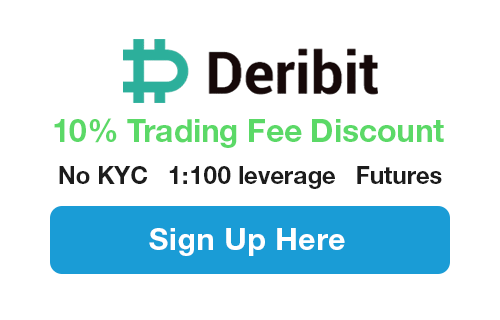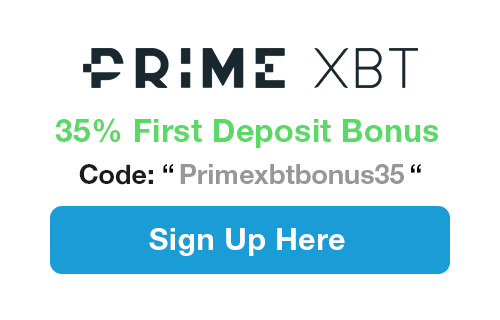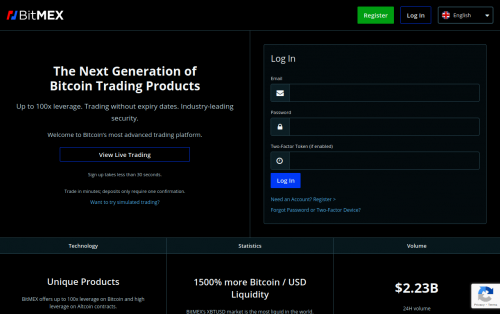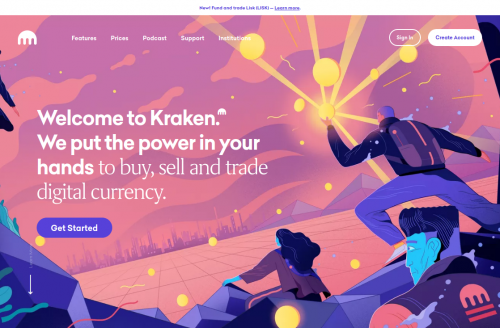Save Money With These Leading BTC Brokers:
Content:
- Perpetual Contracts
- How to Make Money From Bitcoin Futures Trading
- What’s a Good Strategy?
- Use of Leverage
- Best Bitcoin Futures Trading Platforms
- Deribit
- BitMEX
- Binance
- Kraken
- OKex.com
- Bitcoin Futures Demo Trading
- Top 3 Bitcoin Futures Reddit Threads
- Bitcoin Futures Margin Trading
- Bitcoin Futures Trade Start
- CME BTC Futures Trading Volume
A Bitcoin future is a contract to trade Bitcoin at a predetermined date and price, enabling investors to speculate on its price in the future.
Futures play a crucial role in the financial sector. This article will review some Bitcoin futures trading sites and other important details.
But first, what are Bitcoin futures exactly?
You can make sure you get your minimum returns on an investment by concluding a perpetual contract, under which you agree to sell your assets at a price and date determined in advance.
Conversely, investors will aim to get a futures contract for a lower amount than what they forecast the price of BTC will be at that time in the future. This approach offers more room for backend profits.
One’s profit is the difference between the actual BTC price at the time of sale and the price of the future.
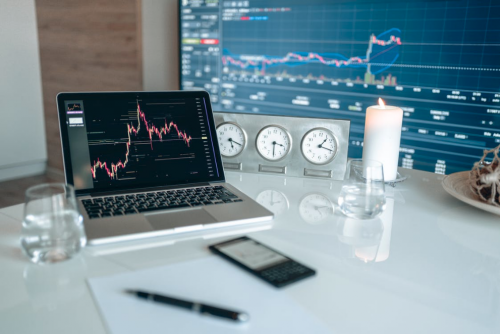 As with futures contracts, perpetual contract trading does not require traders to exchange the underlying asset at the present time. Unlike perpetual contracts, futures contracts have a fixed expiration and settlement date. As long as your margin suffices, you can hold a position perpetually.
As with futures contracts, perpetual contract trading does not require traders to exchange the underlying asset at the present time. Unlike perpetual contracts, futures contracts have a fixed expiration and settlement date. As long as your margin suffices, you can hold a position perpetually.
It might make more sense with an example. If you buy BTC futures at $18,000 per BTC, you will have to settle it when the contract expires no matter what the price is. This entails a certain risk.
If you buy a perpetual instead, you have to buy 1 BTC for $18,000 in the future no matter what the price is. On this commitment, there is no time limit. You can close your position and retrieve your margin at any time in the future.
Perpetual Contracts are More Flexible
This is because they can practically be traded forever. As mentioned, futures trading comes with a degree of risk. An obvious one would be plummeting BTC prices. If you concluded a futures contract, you’d be stuck with overpriced BTC. This happened just after BTC futures were launched at the end of 2017.
Which is the right Bitcoin futures trading exchange for me?
Deribit, Bitmex, Kraken, Binance, and Okex are all excellent options for traders who want to get into Bitcoin futures trading. They have classic futures as well as perpetual contracts. Note that those platforms are not available for US traders due to US law regarding high leveraged derivatives. Except Kraken, they are regulated in the US and therefore generally allow US traders from most states. However, Kraken’s Futures are unfortunately also not available for US traders as they are high leveraged derivatives trading products.
Since end of 2017 Bitcoin also trades on Wall Street as Futures. BTC futures can be accessed on CME, Bakkt, and other well-known exchanges in the US. The Commodity Futures Trading Commission regulates these platforms. The Chicago Board Options Exchange (CBOE) stopped offering BTC contracts in March 2019.
So not all brokers are regulated. According to a study cited by the Wall Street Journal, nearly 95% of all reported trading in BTC is created by unregulated exchanges. Forbes Magazine writes that at present, unregulated venues such as BitMEX, Okex, Huobi, and Binance lead the market.
How to Make Money From Bitcoin Futures Trading
Volatility creates excellent trading opportunities for some and inflicts huge losses on others. Typically, Bitcoin futures trading is carried out by matching buy and sell orders. These orders are removed from the order book after completion of the exchange transaction.
A few exchanges offer margin trading. This type of trading makes it possible to take a short or long position depending on the amount of funds deposited with the exchange. You need to maintain a maintenance margin to cover potential losses. You’ll get a “margin call” when your funds are nearing insufficiency.
One borrows BTC through a leveraged trade when they open a short position. Then, they sell their assets. They buy BTC back at a lower price if it drops to their predetermined exit. After repaying the lender, they hold on to the difference between the buy price and the sell price.
By leaving your position open, you won’t miss out on profit if the price keeps rising. If it keeps rising after you sell (you closed your position), you won’t make a profit.
What’s a Good Strategy?
The best strategy is highly individual. It depends on your trading goals and the amount of risk you deem acceptable per trade. Any fundamental and technical analysis indicators, which you plan to use to help you decide whether to buy or sell, are another factor. Monitoring price and market developments and the types of orders you plan to use should be taken into account.
Use of Leverage
The optimal leverage for Bitcoin futures is 50x. high capital efficiency is an advantage of futures. This means you don’t need as much money to open positions than if you were margin trading or spot trading, which come with 3-5x and 1x leverage respectively. For example, you need to trust all of your funds to spot exchange to sell if you have 10 BTC and are afraid the price will drop. Compared to futures, you trust only 2% of them. 50x leverage offers the flexibility to maintain low exchange risk while positioning yourself on the market.
Best Futures Trading Platforms for Bitcoin
In this section, we’ll discuss the best Bitcoin futures trading sites. These are Deribit, Kraken, BitMEX, Binance, and more.
Getting Started With Deribit
After creating an account on Deribit’s homepage, the broker will take you through a simple verification process, which involves entering an email and other basic information. One of the first things you’d want to know is the price of BTC on the exchange. The Deribit index is used to determine the price. The future’s mark price is used if there is a corresponding future, but this price is limited by bandwidth. This, in turn, is benchmarked against Deribit’s index.
KYC
Two different ID verification levels. On level 0, only basic details are required. Proof of ID is required on level 1.
Deposits
Deposits are only accepted in Bitcoin.
Ease of Use
Deribit partners with a number of auto crypto bots that transact cryptocurrency orders without any user intervention required. The exchange supports limit, market, limit post-only, and iceberg GTC (good till canceled). GTC orders are orders to sell or buy an asset that last until cancelation or completion of the order. All types of limit orders are supported. Only TIF (time in force) GTC market orders are.
Restricted Countries
- Cuba;
- Canada (province Quebec);
- Guam;
- Iraq;
- Iran;
- Japan;
- Panama;
- Democratic People’s Republic of Korea;
- Samoa;
- Puerto Rico;
- Sudan;
- United States;
- Syrian Arab Republic;
- Virgin Islands (U.S.).
Futures Trading Dates
You can trade on Deribit 24/7. Futures always expire on the last Friday of the month at 08:00 UTC. At present, three quarterly futures are available. These expire on the last Friday of March, June, September, and December. The exchange adds a new future with a new expiry date an hour before the previous future expires.
Getting Started With BitMEX
Your deposit is credited to your account after a confirmation on the Bitcoin network, which takes about 10 minutes. You will see a notification on your trading dashboard and get an email. Then, you can start trading.
KYC
BitMEX requires future users to undergo a four-step ID check, where they upload proof of address and a photo ID. They are also asked to take a selfie and respond to some questions about trading experience and source of funds. According to the exchange, the whole process takes about five minutes.
Deposits
Only Bitcoin deposits are accepted. You can deposit any amount you wish; there is no minimum. To make a deposit, copy and paste your address using your Bitcoin wallet software.
Ease of Use
This isn’t the most user-friendly of exchanges. Several futures contracts are available, including quanto, inverse, and linear. We’ll go into each one briefly.
The linear contract price is expressed as the price of the underlying currency / asset against XBT. Typically, the price of a contract is equal to a unit of this asset.
With quanto contracts, the instrument being traded is settled in one currency, but the underlying asset is denominated in another. Profit, loss, and margin are in Bitcoin.
Finally, each inverse contract is worth $1 of Bitcoin, regardless of the current price. Bitcoin futures are quoted as XBT/USD (inverse) to facilitate USD hedging. The underlying is 1 / (XBT/USD). These contracts are suitable for people who want to lock in a USD value of XBT. For example, one would sell future contracts of 100,000 XBT if they were to receive $100,000 in XBT in three months to lock in the Bitcoin value.
BitMEX Market Maker enables traders to quote bilateral, continuous markets. It’s a great way to implement strategies as it supports permanent API Keys.
Types of Orders
BitMEX supports limit orders and three types of stop orders, among others. We use limit orders to specify a minimum or maximum price, at which we are willing to buy or sell. An example for buying: we’d place a bid of 10 contracts in the market, setting a limit price of 100.
With stop orders, the order only enters the book after the market has reached a given Trigger Price. Traders apply these orders as an automatic tool to enter the market at a given point without waiting for the market to place it and as a risk-management tool to reduce losses on current positions.
BitMEX has trailing stop orders, stop limit orders, and stop market orders. The last two are placed when the TP is reached. The first is set if the price drops by an amount equal to the Trailing Value triggered by a market order.
Restricted Countries
- The provinces of Quebec and Ontario, Canada
- United States of America
- Hong Kong
- Republic of Seychelles
- Bermuda
- Cuba
- Crimea and Sevastopol
- Iran
- Syria
- North Korea
- Sudan
- Any country or jurisdiction under US embargo.
Futures Trading Dates
A number of futures contracts are available for trading on BitMEX. You can view their dates here.
Getting Started With Binance
After you register and login at Binance, you should set up two-factor authentication. Then, you can proceed to fund your account. You can do this by sending cryptocurrency from another exchange or a crypto wallet to your account.
KYC
Future users must upload an ID card, a passport, a driver’s license, or another ID document. After verifying your data, the exchange sends out email notifications. New users have to complete the basic data and photo verification process within 15 minutes.
Deposits
Deposits in BTC, ETH, XRP, USD, and the naira are accepted.
Ease of Use
The exchange has two trading settings: basic and advanced. The Basic setting displays only the most important data for making trades. The Advanced setting provides all the market data and price charts one needs to carry out complex trades. For futures trading in particular, you’ll get access to a large number of visualizations, extensive market data, and FAQ on the left side. The data available includes long/short ratios, open interest, and historical funding rates.
On the right side, you can choose a futures contract. The default one is BTCUSDT. Considering that liquidations are based on the mark price, you need to keep an eye on it. It’s here as well. You can also view your current chart and the expected Funding Rate in this section. There is a countdown until the next round of funding, which is helpful to look at.
Restricted countries
None.
Futures Trading Dates
You can also trade 24/7 on Binance. The quarterly 0925 BTC expired on September 25, 2020 respectively. December contracts will be the new front-month upon expiry. Binance’s quarterly futures contracts expire on the last Friday of each quarter.
Getting Started With Kraken
Kraken is pretty serious when it comes to KYC with five whole levels of verification (from 0 to 4). The last two need a lot of proof of ID, but the first three don’t. In order to trade, you need at least Level 1. You click on “Get Verified” on your account screen and enter your name, country, date of birth, and telephone number. For Tier 2, you’ll need to provide proof of address.
Deposits
Kraken supports deposits in USD, EUR, CAD, AUD, GBP, CHF, and JPY. There is no limit to deposits in cryptocurrency. First-time deposits are subject to a 72 hour account withdrawal hold.
Ease of Use
Kraken has the following order types:
- Stop loss
- Market & Limit
- Settle Position
- Stop Loss Limit
- Take profit
- Take Profit Limit
Restricted countries
- Cuba
- Iraq
- Iran
- Afghanistan
- Congo-Kinshasa
- Congo-Brazzaville
- Tajikistan
- North Korea
- Libya
- Syria
Futures Trading Dates
On Kraken, you can trade futures 24 hours/day, 7 days/week, 365 days/year with the exception of intervals for maintenance.
Getting Started With OKex.com
The last Bitcoin futures trading exchange we will look at is OKex.com. Each contract on this exchange is equivalent to $100 of Bitcoin. You sign up on the homepage. Enter your email address and click on ‘Get Code’ to the right of the ‘Email’ field. The exchange emails you a six-digit code. You have one minute to enter this verification code in the respective field.
Now, you must come up with a secure password and enter it in the ‘Password’ field. You confirm it and proceed to the final stage, which is to confirm having read OKEx’s Terms of Service.
Now, you can sign up. Press the big blue ‘Sign Up’ button to do so. A confirmation will be emailed to you. Then, you select your level of experience with cryptocurrency trading. It’s possible to start trading in minutes thereafter.
KYC
To verify your registration, you must visit https://www.okex.com/account/kyc. Have your passport in ready in advance. You’ll be instructed on how to record a verification video.
Deposits
The minimum deposit is 10 USDT or its equivalent in cryptocurrency. Deposits in BTC, ETH, ETC, LTC, BCH, XRP, and XEM are accepted. The deposit address must match the deposited currency. For example, a Bitcoin address will only accept deposits in Bitcoin. You’ll lose any deposit made in another token type.
Ease of Use
The exchange is not hard to use. You register, fund your account, go to futures, and choose a futures contract to trade. You must choose the margin type, which you can do at the top of the page, and the time frame desired. If you choose “BTCUSD”, that means the contract price unit is USD and the contract is settled in BTC. Each option will end in four digits signifying the delivery date.
Then, choose your leverage and enter your desired price and order type. Click on Best Bid Offer if you want to execute your order ASAP.
Restricted Countries
These are Hong Kong, Cuba, Crimea, Sudan, Iran, North Korea, Malaysia, Syria, the US and all its territories (Guam, Northern Mariana Island, Puerto Rico, American Samoa, the US Virgin Islands), Ecuador, Kyrgyzstan, Bangladesh, and Bolivia.
Futures Trading Dates
Okex settles futures contracts on fixed expiry dates. At present, weekly, bi-weekly, quarterly and bi-quarterly futures contracts are available. The system settles all futures contracts that have reached their expiry date at 08:00 (UTC) on Friday of the week it expires by means of non-physical cash settlement. At that time, the position is closed.
Bitcoin Futures Demo Trading
You can open a demo account on eToro, Trading View, Plus 500, BitMEX, Bybit, and other exchanges. As it is a demo account, there’s no minimum deposit or any risk of losing money. We recommend opening one to view indicators, price charts, and patterns and practice placing buy and sell orders.
Trading Bitcoin Futures: Top 3 Most Informative Reddit Threads
Newbies looking for answers to questions such as where to trade BTC, leverage, and losses can find them here. This thread features seasoned traders’ opinions on issues such as whether futures will affect Bitcoin’s price over the long term and overall market volatility. Finally, the “Idiot’s Guide to BTC Futures” is just that, explaining what Bitcoin futures contracts are and how they work very clearly.
Bitcoin Futures Margin Trading
Initially, neither side gets anything because both deposit some margin in the futures markets. The margin moves from short to long (seller to buyer) when the market moves up. Margin requirements vary from platform to platform. The CME requires traders to maintain 37% of the futures contract price as margin for BTC. The initial hedger margin corresponds to the maintenance margin (100% of it). For speculators, the margin increases to 110% of the maintenance.
Some FCM (futures commission merchants) may have stricter margin requirements. This depends on the trader and the market. Via CME Direct, you can access CME group markets directly.
The minimum stake to trade with CME is 5 contracts. In terms of CME futures trading prices, the minimum price fluctuation is $25.00 per contract ($5 per BTC). For calendar spread, $1 per BTC equals $5 per contract.
When do Bitcoin Futures start trading on Wall Street?
On CME, regular hours are Monday to Friday, from 9:30 a.m. to 4:15 p.m. Eastern Time. There are also extended hours: 4:30 p.m. to 9:30 a.m. ET Tuesday through Friday and from 6 p.m. ET Sunday to 9:30 a.m. ET Monday.
On CME Globex, trading hours are from Sunday to Friday, 5:00 p.m. – 4:00 p.m. Central Time. CME ClearPort trading hours are 6:00pm Sunday to 5:45pm Friday CT. Between 5:45pm to 6:00pm from Monday to Thursday, there is a brief maintenance interval.
There is more than one bitcoin futures trading symbol. The CME uses the ticker BTC. The International Standards Organization (ISO) introduced “XBT”, which reflects Bitcoin’s growing legitimacy as a global.
CME Bitcoin Futures Trading Volume
Between 2018 and 2019, open interest increased by about 66%. In this interval, the average daily trading volume rose by 75%. The market achieved a record trading volume of almost 34,000 contracts in the spring of 2019. CME’s Bitcoin futures trading fee was $1.25 as of December 2020.
